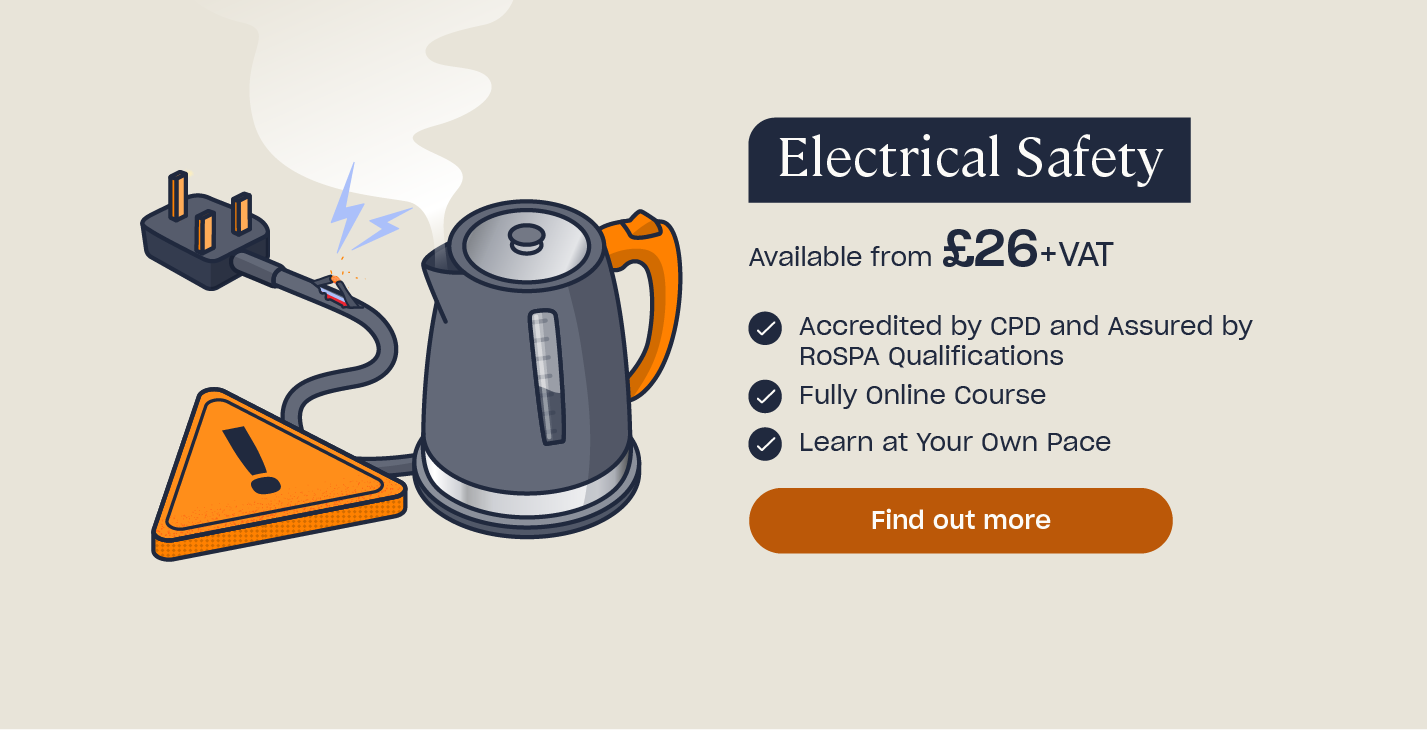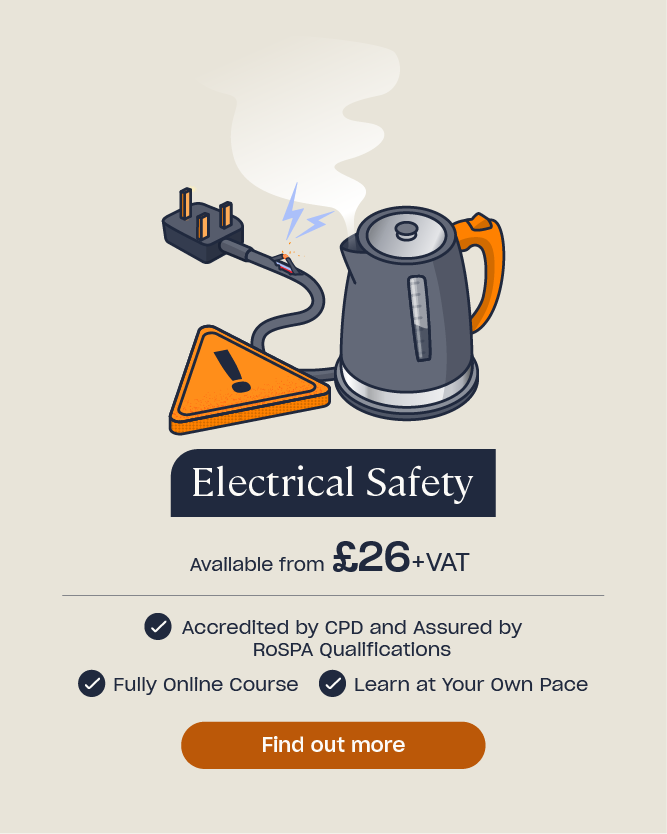Electrical Safety for Kids: A Teacher’s Guide
Aren’t children curious little creatures? They love to learn by touching anything and everything they can. And that curiosity can lead to harm – like a nasty shock. To stay safe, children need proper guidance for learning about electricity and playing safely around various electrical hazards.
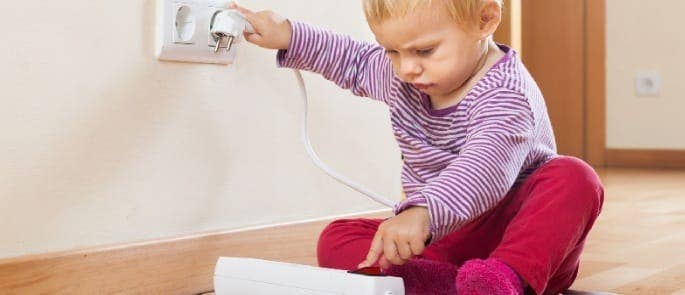
As a teacher, you’re in a perfect position to educate children about the dangers of electricity. Our guide to electrical safety for kids includes practical, fun and engaging activities that will instil good habits and teach your class about electrical safety. Read on to find some examples.
Electrical Safety for Kids
It’s important to teach children the basics of how electricity works and how it can cause harm. But more importantly, you need to teach them about common sources and hazards at a level they can understand. That means adjusting your teaching and activities so they’re age-appropriate for the children in your class.
Our guide provides examples of how to teach children about electricity and safety, and we’ve even included a few class activities you can use.
Electrical Safety KS1
By Key Stage 1, most children are familiar with electrical equipment: TVs, phones, computers, lamps, and kitchen appliances, to name a few. Soon, if not already, they’ll be using electronics, so it’s important for them to learn the basics of safe usage.
Electrical safety for kids is effectively taught through hands-on learning. Making it interactive helps children grasp concepts and rules, and holds their attention.

Identify objects around the classroom
Start by taking children around the room to identify things that do and don’t use electricity. Bring in a variety of items from home if your classroom doesn’t have many.
Encourage the class to identify objects that are and aren’t electrical on their own and to explain why they think so. When they don’t know the difference, point out features that show an item is electrical, e.g. wires, on and off switches, movement, and light emission. Let them hold and touch things, including the wires and switches.
Also, make children aware that wall plug sockets are for 3-pin plugs only, not pens or fingers. Plug and unplug a lead, and explain that this is how many electrical appliances receive energy. Lastly, set a perfect example by turning off socket switches before removing the plug, so your kids understand how to prevent shocks.
Get your marker pens, scissors, and glue ready
Once students are back to their desks, give them activity sheets to test their ability to separate electrical equipment from non-electrical objects. The activity could involve labelling or colour coding groups of images that are powered by electricity, or cutting out and sticking pictures into 2 tables: electrical and non-electrical.
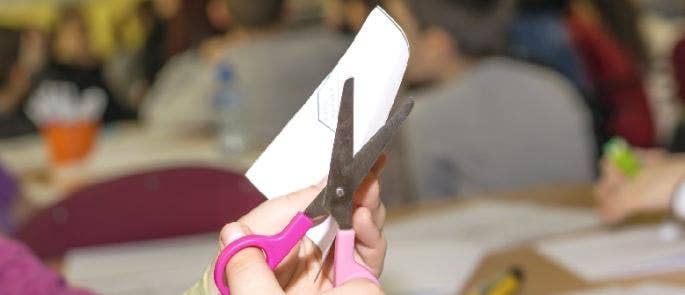
You can also teach the dos and don’ts of electricity with activity sheets that have drawings of electronics in a living room or bedroom.
The image could feature trailing or frayed cables, overloaded plug sockets, or electrical equipment on unstable surfaces. Have them circle or colour in the hazards, without giving them hints. Then, once they’re done, hand out a new page with a list of safety facts next to pictures of the correct hazards so they can see what they got right.
Electrical safety facts to list include:
- Don’t overload sockets or extension plugs/cables (you could start a fire!).
- Don’t put electrical objects on a wobbly surface.
- Make sure there aren’t any cables where people walk.
- Turn off electrical objects by the switch and unplug.
- Make sure cables are not caught or knotted on furniture or chair legs.
- Keep water, juice, or any other types of liquid away from electronics.
- Don’t touch electrical objects with wet hands.
- Don’t use electrical objects in the bathroom.
Remember to explain why you should or shouldn’t do these things, as it’ll help your class retain their new electrical safety knowledge and apply it to wider scenarios.
Electrical Safety KS2
By Key Stage 2, children are probably using electrical equipment on a daily basis and getting pretty tech-savvy. They can tell the difference between things that are electrical and non-electrical, but may not yet fully understand how and why electricity can be dangerous.

Your lessons can now get a bit more technical, discussing where electricity comes from and how equipment protects people from contact with electricity. If you haven’t already, you can also talk about batteries, and use hands-on activities to show them how they work on a technical level.
Where electricity comes from
Ask your children if they’ve ever seen an electricity pylon in the countryside. You may want to phrase it as “big metal towers with wires” and accompany it with an image. Also ask if anyone knows what these pylons are for.
Use visual aids (such as a video or infographic) to explain that power stations generate electricity, and these pylons transmit electricity all around Britain.
How electrical equipment is made safe
Your pylon discussion is a good way to segue into why many electrical appliances are safe to touch. Our electronics are insulated, but pylons and electrical power stations are not. You may want to also explain that metal can carry (or ‘conduct’) electricity, which is why touching pins on plugs or the inside of a toaster, for example, can cause a shock. And it’s why going near a pylon or power station is extremely dangerous.

Talk about how small wires inside cables carry (or ‘transmit’) electricity, and that the outer case protects us and our surroundings from coming into contact with live electricity. You could show them a cable with exposed wires (make sure it’s not electrically charged) so they recognise what it looks like.
How batteries work
It’s useful for kids to know that some electronics are powered by batteries. They won’t be strangers to batteries since many toys use them, but they probably don’t know how they work or why batteries come with risks.
Batteries are not powered by electricity in the traditional sense. They contain chemicals that react and generate electrons – make sure you explain this term.
Because of the way the battery is structured, the electrons build up in one place and can’t move. So, when you place a battery inside an electrical appliance, it creates a ‘conductive path’. Electrons travel along this path to reach the other end of the battery, and along the way they charge whatever the battery’s plugged into.
Eventually, the internal structure of the battery changes as the electrons move. At this point, it’s either dead or needs recharging. When you recharge a battery, you reset the internal chemical structure, meaning the electrons are ready to go again.
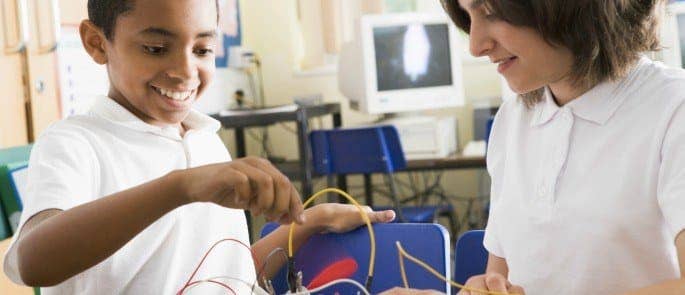
A good way to demonstrate this is with a hands-on activity:
Creating a simple circuit:
- You’ll need a bulb holder with a low voltage bulb, 1 AA battery, 2 wires, insulation tape, and a screwdriver.
- Demonstrate to your class how to build a circuit: attach each wire to one end of the bulb holder (around the metal screws).
- Tape the other end of each wire to the two ends of the battery.
- Watch them be amazed when the bulb lights up!
- Split the class into groups.
- Let them take turns trying themselves.
Take this opportunity to teach children about the risks batteries pose if mishandled. Distribute A4 safety posters that have pictures next to each safety fact; each group can look at a poster while taking turns to set up the circuit.
What to include on the battery safety poster:
- Do not try to recharge batteries that are non-rechargeable. Every battery should say on its side whether it is rechargeable or not. If it doesn’t say, you can assume it’s non-rechargeable.
- You must recycle non-rechargeable batteries; do not put them straight in the bin. Take them with you to your local supermarket; most usually have a battery recycle bin.
- Don’t try to force batteries that don’t fit in a slot. You might damage the battery or connection.
- If a battery looks damaged or is leaking, don’t use it. Tell your parents or teacher.
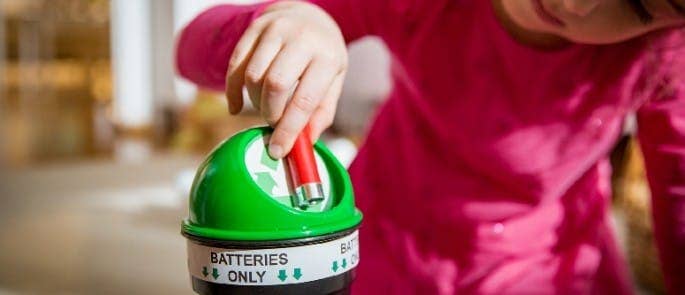
Children need a strong understanding of how and why electrical equipment can cause harm, and how they can stay safe. They can apply the knowledge you give them to their home, whether it’s their bedroom or living room, and hopefully, they’ll keep themselves out of trouble.
More Information for Teachers:
- Environmental Awareness for Children: Ideas for Teachers
- Environmental Awareness Quiz for Kids
- Electrical Safety Symbols & Signs: What Do They Mean?
- Electrical Safety Quiz
- Electrical Safety Training


